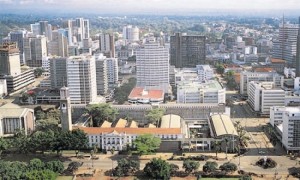 A stable democracy, ongoing political reform, a new constitution and a solid vision for the future are driving Kenya forward into a new and prosperous era.
A stable democracy, ongoing political reform, a new constitution and a solid vision for the future are driving Kenya forward into a new and prosperous era.
An extremely concise, simplified summary of Kenyan events over the past three years would run along the lines of: skewed elections, a brief political/humanitarian/economic crisis, UN intervention, a power-sharing agreement, a referendum, a new constitution, pro-market reforms and economic growth. In other words, a lot has happened, and great changes are still under way.
When President Mwai Kibaki of the Party of National Unity, or PNU, and his rival in the December 2007 elections, Raila Odinga of the Orange Democratic Movement, or ODM, signed the National Accord and Reconciliation Act in late February 2008, they formed a coalition government that has since remained intact and is expected to continue until the next election in 2012. Furthermore, despite partisan fighting within Government ranks, last August saw the ratification of a highly awaited new constitution, supported by the PNU and the ODM.
A general feeling of optimism, hope and determination has emerged among the population, thus furthering the realisation of Government reforms, especially those laid out in Vision 2030, which stands on social, economic and political pillars.
“In the last two years of the Vision’s implementation, the economy has improved and is firmly on the recovery growth path towards the envisioned 10 per cent annual growth rate,” said President Kibaki in early February. “After the challenges we faced three years ago that led to a growth rate of 1.6 per cent, we are now back on track with a growth rate of 6 per cent.
“A healthy economic growth rate enables us to better the lives of our people and creates more opportunities. For instance we have made significant gains in the education and health sectors; in poverty reduction; job creation, especially for the youth; and infrastructure development, among others. Our reform efforts have received international recognition and this has improved the country’s sovereign credit rating by Standard and Poor’s to B+. The prospects for this year and the subsequent years are even brighter and we hope to maintain the momentum and move towards being a newly industrialised state by the year 2030.”
While the civil unrest of 2008 to 2009 left casualties and displaced people, the Kenya of 2011 is marked by peace, greater unity and a more locally responsive government.
“Kenya recognises that democracy and development can only be realised if there is respect for human rights, the rule of law and good governance. Of paramount importance, however, is peace, which must be nurtured and supported by strong institutions and legal frameworks,” said President Kibaki, addressing the African Union in late January. “These are the cornerstones of peace and development.”
The International Criminal Court (ICC) has identified six well-known Kenyans as the culprits of the post-election violence of 2008, and is now deliberating on issuing summons or warrants. This step should help serve justice and add closure to the tragedy, thus allowing Kenya to put it behind and look forward to becoming even more attractive to tourists and entrepreneurs.
Investors have traditionally been drawn to this East African nation due to its favourable location within the African continent, its geographic proximity to the Middle East and Southeast Asia and the modern Port of Mombasa. Kenya boasts the title of richest member in the East African Community (EAC) as well as special ties with Europe and the US.
More recently, the business community has seen Kenya’s pro-market reforms include deregulation, the privatisation of several key institutions and a growing role in regional trade. The business-friendly and FDI-welcoming Government has also incentivised the entrance of international players; import licences are no longer required and there are restrictions on overseas remittances by foreign companies.















